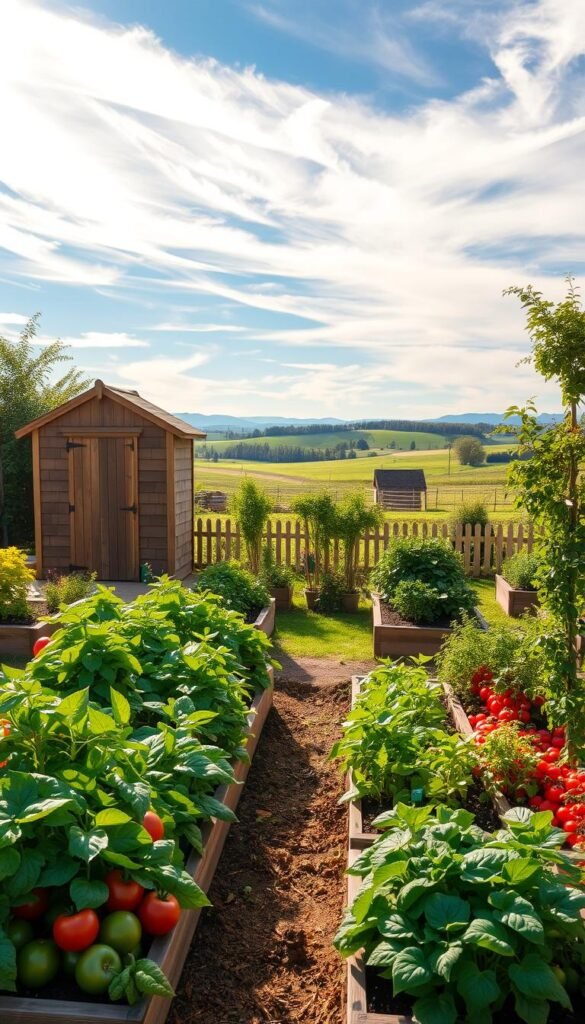Starting your first planting space can feel like solving a puzzle with missing pieces. You might picture rows of lush greens and ripe tomatoes, but overambitious plans often lead to burnout. Samuel Levenson once wisely noted: “You must learn from the mistakes of others”—advice that’s golden for beginners.
Many enthusiastic growers fall into the trap of cramming every inch of soil with plants. This creates a jungle that’s hard to manage, not a thriving edible oasis. Plants compete for sunlight and nutrients, pests spread faster, and watering becomes a guessing game.
Here’s the good news: small steps lead to big harvests. Instead of transforming your backyard in one weekend, focus on a few raised beds or containers. This lets you master basics like spacing and crop rotation without feeling swamped.
Smart design isn’t just about looks—it shapes your plants’ health and your enjoyment. Proper airflow reduces disease, while thoughtful placement saves hours of maintenance. By dodging early missteps, you’ll build confidence and a garden that grows with you.
Understanding Garden Layout Fundamentals
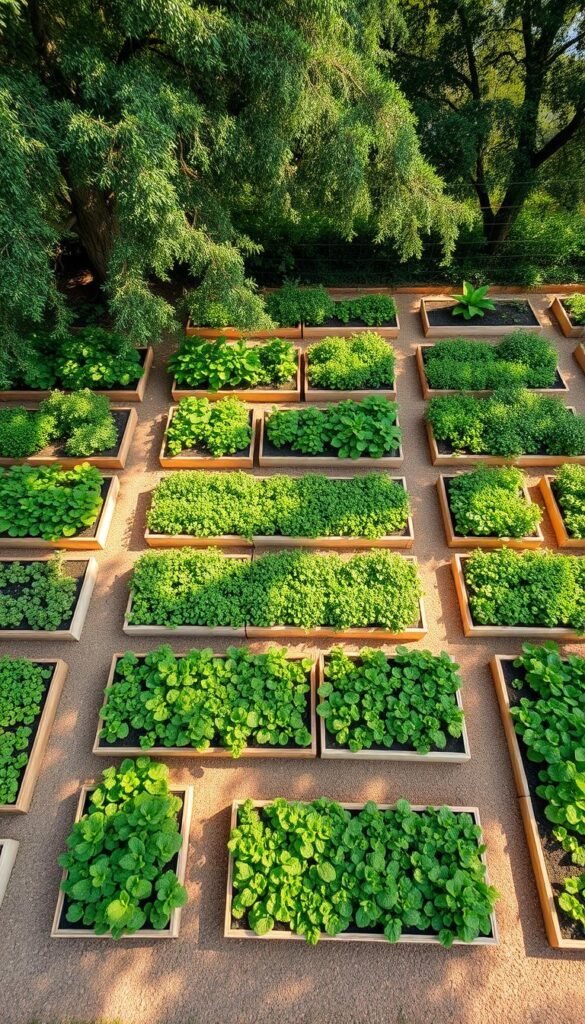
Ever wondered why some plots flourish while others struggle? It starts with smart spatial planning. Like building a house, your growing area needs a blueprint. “There’s only one way to eat an elephant,” as the saying goes—start with a single bite-sized bed. This approach lets you focus on quality over quantity, ensuring each plant thrives.
Benefits of a Structured Garden
A well-organized space works smarter, not harder. Proper spacing between beds gives roots room to breathe and lets you move freely for watering or harvesting. Strategic layouts also make crop rotation easier, which keeps soil nutrients balanced year after year.
Think of your beds as neighborhoods. Just like people, plants need elbow room. Crowded conditions invite pests and block sunlight. By giving each variety its own zone, you create a healthier environment for everyone.
Avoiding Overcrowded Beds
More isn’t always better. Squeezing too many seedlings into one area triggers underground battles for water and nutrients. Tomatoes might overshadow peppers, while squash vines could strangle carrots. Stunted growth becomes inevitable when competition runs wild.
Start with one manageable bed. Learn its rhythms before expanding. You’ll spot issues faster, adjust watering habits, and celebrate successes sooner. Remember: A single thriving bed beats three struggling patches every time.
Assessing Your Garden’s Environment

Your garden’s success begins with understanding its natural conditions. Sunlight and water access aren’t negotiable—they’re the foundation every thriving plot needs. As seasoned growers say: “You can’t negotiate with Mother Nature, but you can work with her.”
Sunlight and Water Accessibility
Picture your plants as solar panels—they need direct fuel to produce. Less than six hours of daily sun leaves them weak and vulnerable to pests. Morning light shines brightest here, drying dew quickly to prevent mold while kickstarting photosynthesis.
Ever tried hauling buckets across your yard? If your water source feels like a trek, you’ll skip sessions. Place your garden near a spigot or rain barrel. Consistency matters more than perfect timing—damp soil beats occasional floods.
Test potential locations through seasons. Track shadows from trees or buildings using a sun calculator app. South-facing areas often win, but microclimates matter. One hour less light could mean 30% fewer tomatoes!
Smart placement saves frustration later. Invest time upfront to avoid replanting struggling crops. Your future self—and your harvest—will thank you.
Ensuring Optimal Soil Health
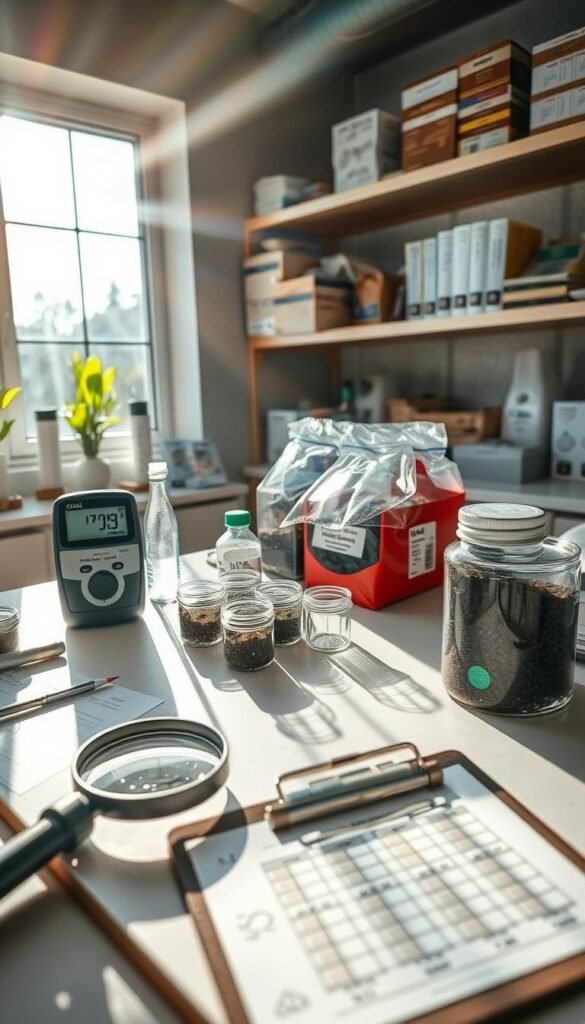
Beneath every thriving plant lies a bustling ecosystem most growers never notice. Your crops don’t just sit in dirt—they interact with living soil that breathes, feeds, and protects. This underground network holds the key to your harvest’s success.
Testing and Amending Your Soil
Healthy earth contains more microorganisms than people on Earth. A simple test kit reveals your soil’s pH and nutrient levels. Most vegetables thrive in slightly acidic conditions (6.0-6.8 pH)—outside this range, plants struggle to absorb minerals.
| Aspect | Dirt | Living Soil |
|---|---|---|
| Microbial Life | None | 10 billion/teaspoon |
| Water Retention | Poor | Excellent |
| Nutrient Availability | Locked | Easily absorbed |
Amendments like compost boost organic matter, creating air pockets for roots. For every 1% increase in organic content, soil holds 20,000 gallons more water per acre. Mix in aged manure or leaf mold 3 weeks before planting.
Many new growers skip soil prep, only to face stunted growth. A $15 test saves months of frustration—it’s cheaper than replacing failed crops. Your plants can only be as strong as the foundation you give them.
Identifying Critical Layout Challenges
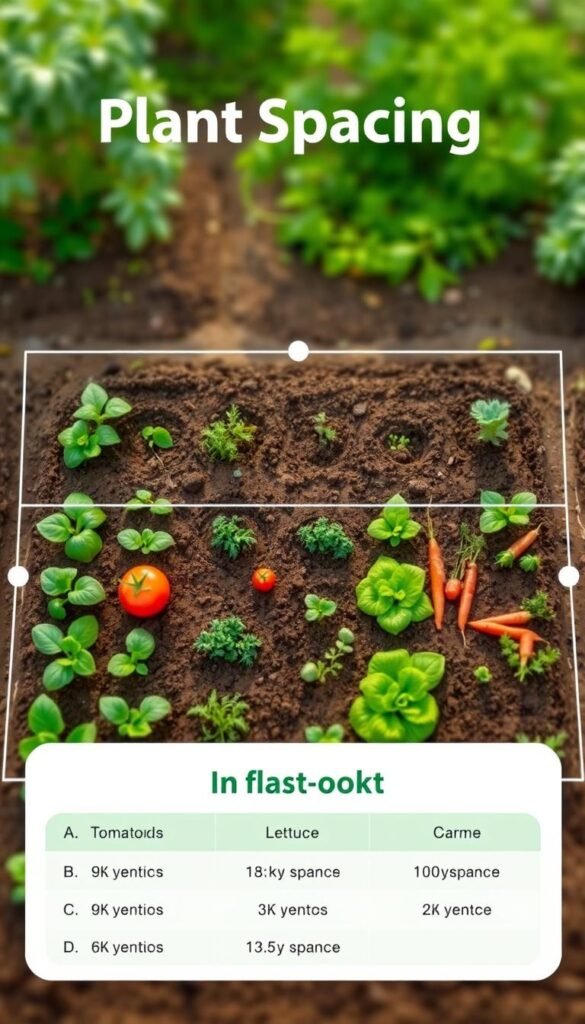
Picture your plants as puzzle pieces—each needing their own spot to shine. New terms like “days to harvest” and “frost dates” might feel overwhelming, but local planting calendars turn confusion into clarity. As one seasoned grower advises: “Don’t play guessing games with your green friends—they’ll always lose.”
Space Planning and Plant Needs
Many beginners forget that seedlings triple in size. Compact basil thrives shoulder-to-shoulder, while zucchini demands three-foot spreads. Vining cucumbers? They’ll conquer nearby beds if not given vertical space. Planting without considering growth habits invites chaos.
Cool-season crops like spinach vanish by summer, freeing space for heat-loving peppers. This seasonal shuffle maximizes yield but requires forethought. Follow regional guides instead of winging it—they’ve already calculated your area’s perfect timing.
Overcrowding isn’t just messy—it’s dangerous. Tomatoes battling beans for sunlight become weak targets for pests. The square-foot gardening method solves this by assigning precise zones. Why reinvent the wheel when expert-tested layouts exist?
Remember: Your plants aren’t decorations. They’re living systems needing room to breathe, eat, and stretch. Give them that courtesy, and they’ll repay you with baskets of bounty.
Spotting Bed Design Blunders Before They Bloom
Even experienced growers sometimes overlook bed arrangement issues until plants protest. Poor layouts often reveal themselves through stunted growth or pest invasions. Three key errors repeatedly trip up enthusiasts: awkward pathways, mismatched dimensions, and sun-blocking orientations.
Pathways and Proportions Matter
Narrow walkways between beds become mud slicks after rain. Aim for 18-inch paths—wide enough for kneeling but tight enough to discourage weeds. Beds stretching beyond arm’s reach (over 4 feet wide) force you to step on soil, crushing delicate root networks.
Rows running east-west cast afternoon shadows on shorter plants. North-south alignment lets sunlight dance across leaves all day. This simple shift can boost yields by 15% for sun-hungry tomatoes and peppers.
Shallow beds (raised beds at 12-18 inches tall. This creates a cozy microclimate that speeds up spring planting.
Irregular shapes waste precious space. Rectangular beds fit crop rotation patterns neatly, while curved edges leave awkward gaps. Consistency helps with mulching and companion planting strategies too.
Watch where water pools after storms. Beds placed in low spots drown roots, while hillside plots need terraced designs. A weekend spent observing your land prevents years of drainage headaches.
Mastering Plant Spacing and Density
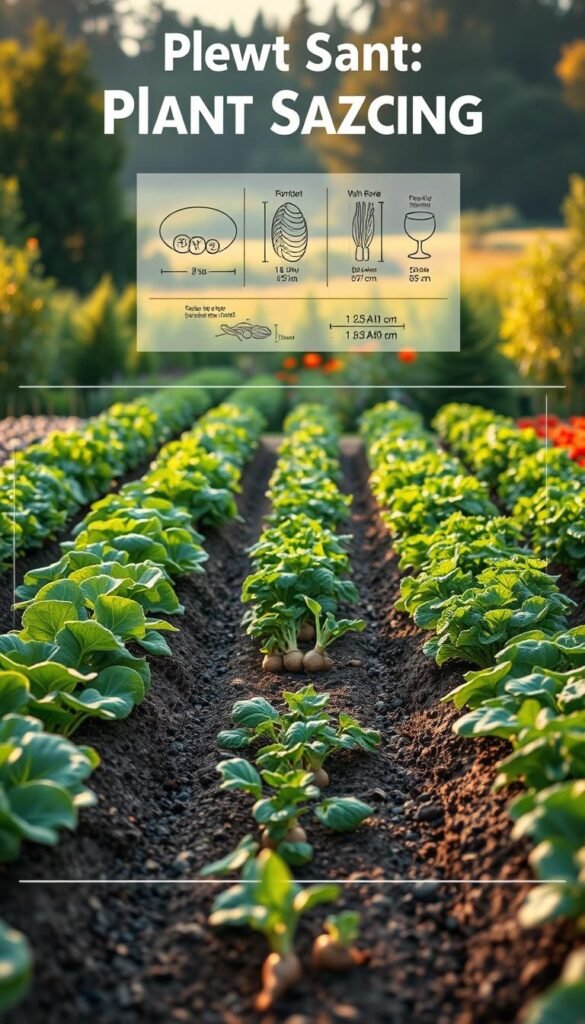
Imagine your favorite coffee shop crammed with twice as many tables. That’s how your plants feel when overcrowded. Proper spacing acts like invisible armor against pests and disease, letting each seedling thrive without elbow wars.
Why Breathing Room Matters
Leaves brushing against neighbors create perfect hideouts for harmful insects. Stagnant air between packed stems turns into a fungal playground. One tomato plant touching another spreads blight faster than campfire gossip.
Follow seed packet directions like treasure maps. Those numbers account for mature sizes—what starts as a tiny basil sprout becomes a bushy giant. “Thinning seedlings feels cruel,” admits urban farmer Lila Martinez, “but it’s like choosing which friendships to nurture.”
- Airflow gaps let leaves dry faster after rain
- Sunlight reaches lower foliage evenly
- Ladybugs patrol freely when not trapped
Overcrowded roots steal nutrients like siblings fighting over fries. Give each plant its meal ticket through smart spacing. For small-space gardening strategies, focus on vertical growers like pole beans instead of bush varieties.
Test spacing by laying tools between seedlings—a trowel handle equals 6 inches. Remember: More room means bigger harvests, not wasted space. Your plants will reward you with vigorous growth and fewer bug battles.
Optimizing Watering Methods for Success
Your plants’ thirst isn’t just about quantity—it’s about strategy. Like serving drinks at a party, timing and technique determine whether your greens thrive or merely survive. Let’s break down two game-changing approaches.
Deep Watering vs. Shallow Watering
Deep watering trains roots to dig deeper for moisture, building drought-resistant warriors. Shallow sprinkles? They create lazy surface roots that panic during heat waves. Check soil moisture by poking your finger an inch down—if dry, it’s time to hydrate.
Clay pots dry 25% faster than plastic. If using containers, size matters. Mulch acts like a moisture blanket, cutting evaporation by 30%. Water until the soil feels like a damp sponge—not a swamp.
Best Times to Water Your Garden
Morning is MVP. Leaves dry quickly as temps rise, slashing fungal risks. Evening watering works in dry climates but invites mildew where humidity rules. Avoid midday—60% of water evaporates before reaching roots.
Watch your plants after sunset. Wet foliage overnight is a disease invitation. Adjust based on weather apps, not guesswork. Your greens will reward you with perky leaves and plump produce.

